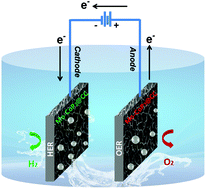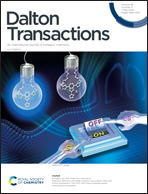Hierarchical Mo-doped CoP3 interconnected nanosheet arrays on carbon cloth as an efficient bifunctional electrocatalyst for water splitting in an alkaline electrolyte†
Abstract
Design and fabrication of highly efficient and robust noble-metal-free bifunctional electrocatalysts for overall water splitting in alkaline media is challenging. Herein, we report a unique bifunctional electrocatalyst consisting of three-dimensional (3D) hierarchical Mo-doped CoP3 nanosheet arrays on carbon cloth (Mo–CoP3 NAs@CC) fabricated by a facile electrodeposition process and the subsequent PH3 plasma-assisted phosphorization. Benefiting from the hierarchical nanostructure and doping effect of Mo, the optimal Mo–CoP3-2@CC electrode demonstrates excellent HER and OER catalytic activity with an overpotential of 62 and 300 mV at 10 mA cm−2, respectively, and reasonable stability up to 20 h in 1.0 M KOH. Impressively, when Mo–CoP3-2@CC is used as both HER and OER electrodes in an alkaline electrolyzer, a current density of 10 mA cm−2 is achieved at a cell voltage of only 1.65 V, and the stable water-splitting current is maintained for 25 h, showing great promise for practical applications.



 Please wait while we load your content...
Please wait while we load your content...